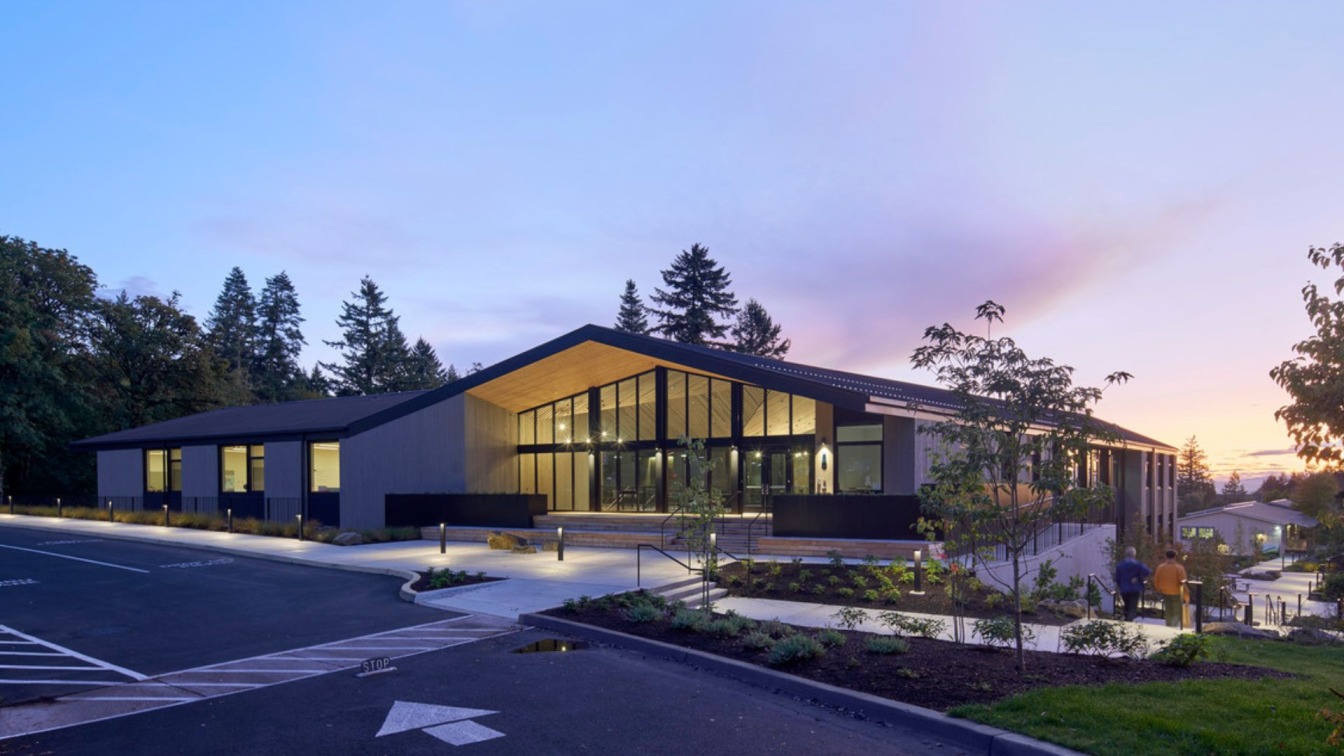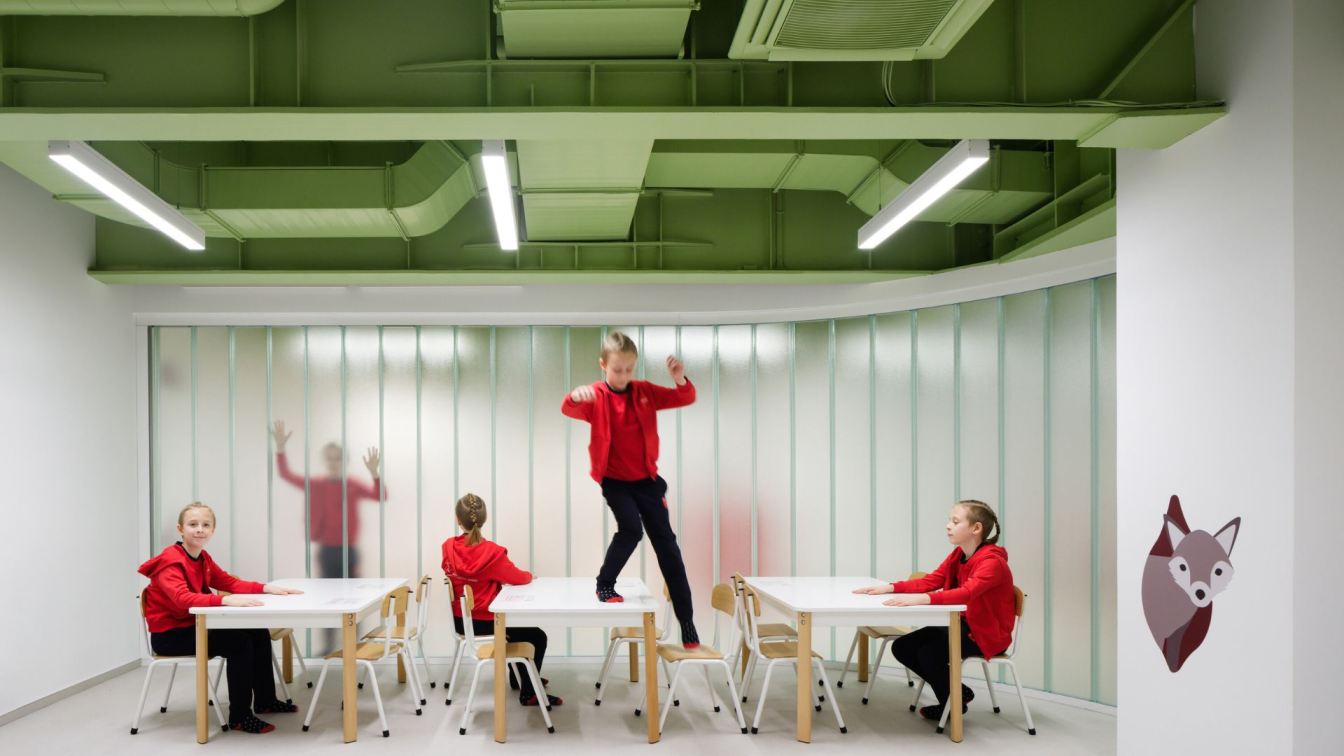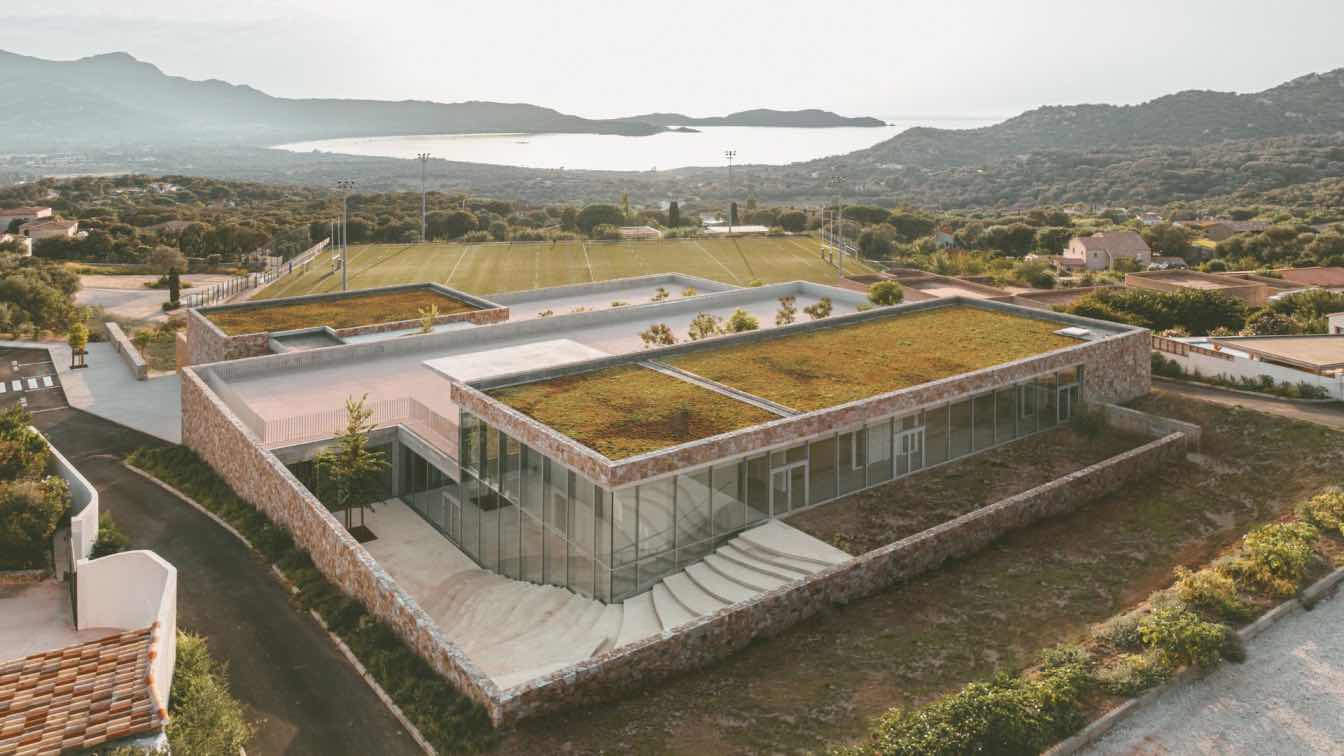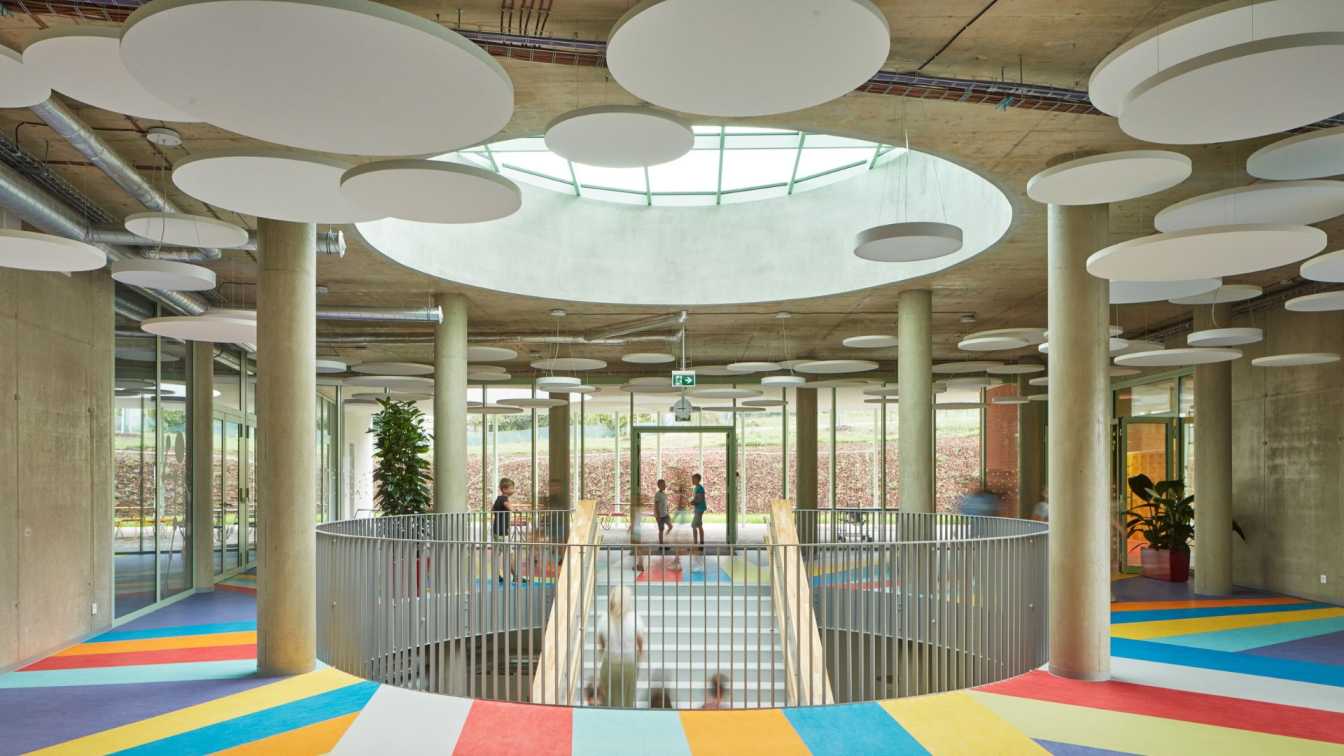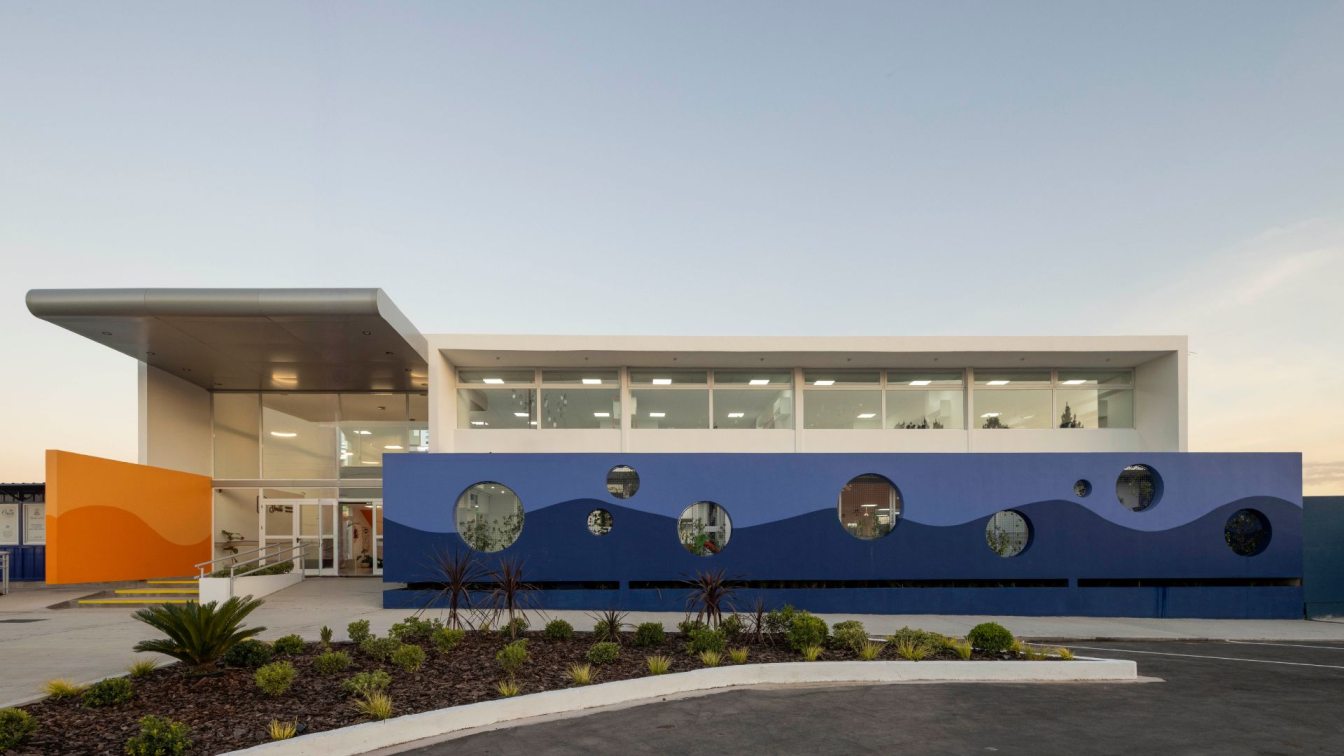Hacker Architects: How can the design of a school foster the social independence that is developmentally appropriate for middle school students, ensuring that they are inspired to take initiative for their own learning and to think beyond themselves as they mature into global citizens?
The French American International School (FAIS) began thinking about these issues in planning for the replacement of their 20-year-old modular classrooms with permanent structures. At the time, middle schoolers were taught in scattered, modular buildings with outdoor circulation in a rainy climate and no dry, tempered social spaces for gathering, informal learning, or independent student discovery, which led FAIS to choose the new Middle School as their first prioritized project.
FAIS set bold goals for sustainability and resilience for the Middle School and the rest of their campus plan. Their pedagogy is multi-lingual and internationally focused, and their goal is to prepare the next generation of global leaders and creative thinkers; it has also been strongly influenced by the adjacent forest and the bounty of hands-on learning opportunities in the habitats, ecosystems, and life cycles students can observe there.
The design solution took inspiration from the nurse logs downslope of the site, whose decomposing mass serve as a nutritive substrate for a diversity of seedlings native to the forest. Hacker’s vision for the 26,500-square-foot project emerged out of this fecundity: to create habitat for middle schoolers that would feed their hearts, minds, and bodies, to work in community with their teachers, and challenge them to find their own inspiration and independence.

The design concept clusters these program spaces to create “cabins in the woods," another design concept inspired by the forest setting: fourteen classrooms, five teacher pods and administration offices. Whether interior or exterior, each cabin’s four walls are clad in wood, bringing the forest through the building and
blurring the lines between inside and out. These cabins are organized in a boomerang shape that follows the site’s topography then unites under a roof whose sculptural form frames the view of the forest beyond.
The space between the cabins is defined by large operable windows that visually and audibly connect inhabitants to sylvan habitat along the forest wing and to the community activity along the campus wing.
A lively single-loaded corridor provides informal social learning along with the Hub, a central two-story gathering space that anchors the entry sequence and promotes wayfinding throughout the building’s boomerang form. This configuration provides ample daylight and a connection to the landscape while
simultaneously allowing cross-ventilation to occur naturally.
The project is compliant with AIA 2030 guidelines and the Energy Trust of Oregon’s Path to Net Zero program









































